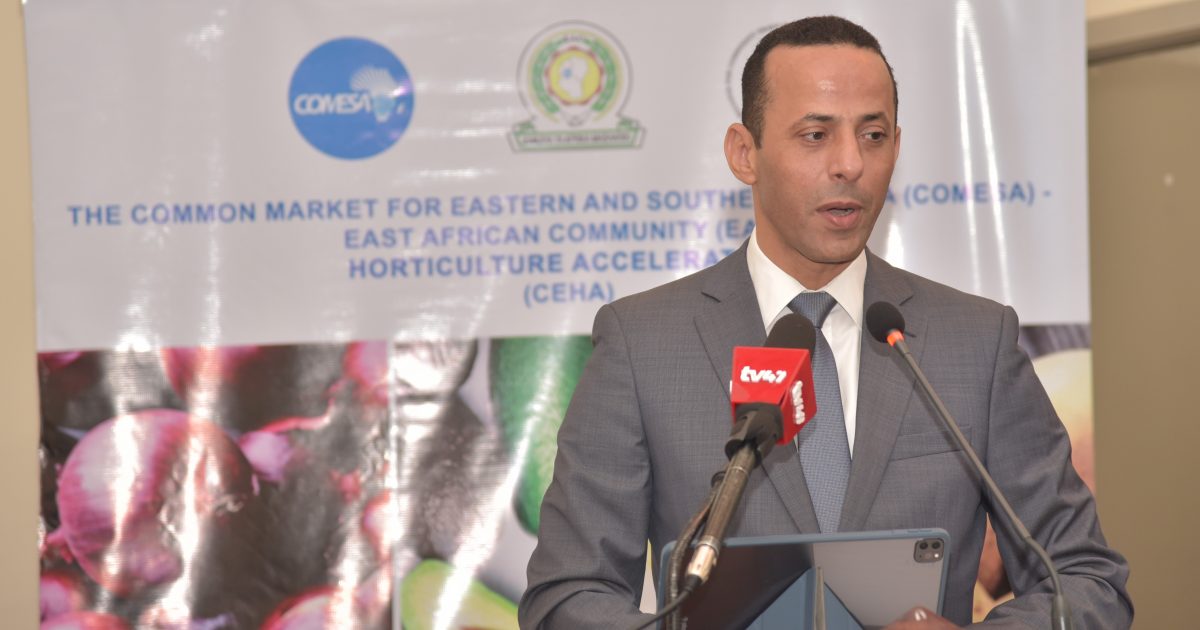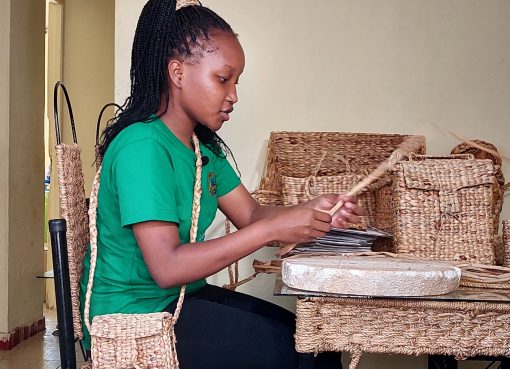Kenya is among the five countries selected to implement the COMESA East Africa Communality (EAC) Horticultural Accelerator (CEHA) initiative alongside Ethiopia, Rwanda, Tanzania and Uganda.
The CEHA is set to coordinate policy, value chain development programmes, financing, and Research and Development (R&D) of the horticulture industry.
It will be able to speed up growth of the Fruit and Vegetable (F&V) sub-sector of the COMESA and EAC Regions
“CEHAS vision by 2031 is that climate-smart horticulture value chains will become a significant driver of income growth, inclusive job creation, and improved nutrition throughout Eastern and Southern Africa,” said Dr Mohamed Kadah, Assistant Secretary General Programmes at the COMESA secretariat during the launch of the CEHA Kenya Chapter Friday.
He noted that CEHA is initially focusing on three priority anchor value chains namely avocado, onion and Irish potatoes.
“These specific value chains have agronomic, logistical, regulatory challenges and opportunities that are common to many other F&V crops,” he said noting that the three value chains were selected in 2022 through surveys based on production capacity, impact potential, market growth and value chain competitiveness of the crops as well as alignment to government priorities and degree of development partner investment.
Dr Kadah explained that CEHA has a bottom-up structure where strategic priorities identified by national-level stakeholders, mainly the horticulture private sector drive the priorities at a regional level.
He said that CEHA at National Platforms Chapters will undertake establishing strategic horticultural production and processing clusters with agribusiness incubators throughout five targeted countries based on unique comparative and competitive advantage
It will also facilitate the modernisation of regional horticulture value chains across East Africa, leveraging the comparative advantage, infrastructure, and technology in each country.
Dr Kadah said that COMESA Secretariat through Alliance for Commodity Trade in Eastern and Southern Africa (ACTESA) is looking forward to the transformation of the horticultural industry in our region that is currently at USD4 billion to double or triple in the next 10 years.
“CEHA will provide many opportunities for the COMESA and EAC Region especially the landowners with access to less than 1 hectare of land. High value fruits and vegetables are consistently more profitable than cereals and other common staple crops, and the demands for these products are increasing for both domestic and export markets,” he explained.
Representing Principal State Department for Trade Alfred K’ombudo, Deputy Director for trade and the COMESA focal point person Catherine Kithinji said that Kenya has for a long time depended on maize as a national staple, giving impetus to initiatives that support this value chain.
“CEHA’s deviation from this norm is a welcome move as the Irish potato’s potential to mitigate the food insecure situation in the country as captured in the programme background is astronomical, the nutritional benefits of the avocado to the citizenry as well as the export-driven forex make this a worthwhile pursuit while the inclusion of the onion value chain in this initiative is a timely consideration as there is need to reduce our reliance on imports to meet the domestic demand,” the PS said.
The PS called upon the CEHA Kenya National Chapter team to work towards being the regional pacesetter for the programme implementation, commending the streamlined approach of linking the aligned COMESA and EAC priorities as it reinforces the outlook of the Africa-wide trade integration under the AfCFTA configuration, which seeks to build on the existing Regional Economic Blocs.
ACTESA CEO Dr John Mukuka said Avocado, onion, and Irish potato can generate a combined USD 230 million in additional value per year for approximately 450,000 smallholder farmers of a minimum viable farm size.
“The countries of focus, Kenya Ethiopia, Rwanda, Tanzania and Uganda were selected based on the overall financial contribution of the horticulture sub-sector to the economy of the countries within Eastern part of the Common Market,” he said
In Kenya, Dr Mukuka said it is estimated that avocado and Irish potato have the potential to create more than 50,000 and 380,000 additional jobs, respectively and thus CEHA will allow for more effective and efficient coordination of public, development agency, and private sector investments around common aims to generate higher impact that these investments made independently of each other.
NPCK will be hosting the CEHA-NPCK Kenya National Chapter and according to the NPCK chairman Paul Nderitu, horticulture, emerges as an important sub-sector within agriculture, with huge potential for economic prosperity and empowerment
Kenya’s exports accounted for a respectable 35 percent share of total exports in the EAC in 2022 and a 20 percent share in COMESA. Exports to Africa increased by 15.7 percent in 2022, with the East African Community (EAC) being a key market.
In addition, exports to the EAC grew by 17.7 percent in 2022, reaching Sh 357.7 billion compared to Sh 309.3 billion in 2021, driven by increased exports to Tanzania and Rwanda.
By Wangari Ndirangu





